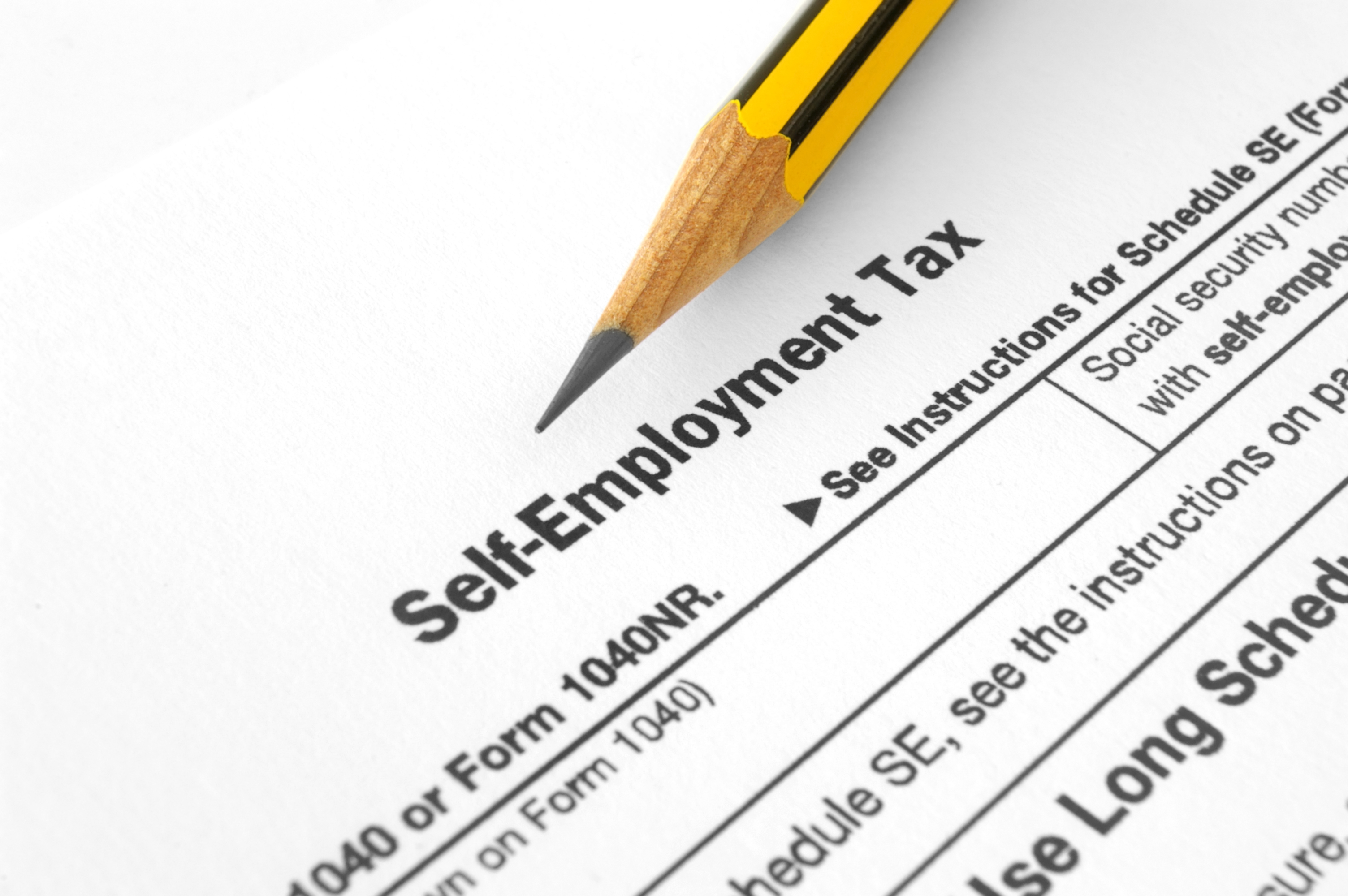Seven Overlooked Tax Deductions for the Self-Employed
If you've recently gone into business for yourself, don't miss these sometimes overlooked credits and tax deductions for the self-employed.


You finally did it! You quit your job working for someone else and ventured out to start your own business. But, as you know, becoming self-employed can be scary.
The success of your business is in your own hands, which can create extra pressure and anxiety. And that pressure can increase when you’re trying to figure out your self-employment taxes and find ways to potentially lower your business tax bill. That is because it can be hard to know which tax deductions for the self-employed you can, or cannot, claim.
Fortunately, there are some self-employment tax deductions and tax credits that just might improve your bottom line. And hopefully, knowing about these tax breaks, which are often overlooked, will help dial down the stress level associated with owning your own business.
With that in mind, check out these seven often-overlooked tax deductions and tax credits for the self-employed.

1. Business vehicle use tax deduction
If you drive your own car for business, there’s a business vehicle use tax deduction that isn't just for Uber or Lyft drivers. Any self-employed person who makes deliveries, drives to a client's location, or otherwise uses a personal vehicle for work-related purposes, can claim the tax deduction for business use of a vehicle.
There are two ways to calculate the business vehicle use deduction. You can use either the standard mileage rate or your actual car expenses:
- If you use the standard mileage rate, you can deduct $0.70 per mile for 2025 ($0.655 for 2024). Just keep good records of the dates and miles you drive for work, and keep in mind that driving for personal trips or errands is not considered business use of the vehicle.
- With the actual expenses method, you add up your car-related expenses for the year (e.g., gas, oil, tires, repairs, parking, tolls, insurance, registration, lease payments, depreciation, etc.), and multiply the total by the percentage of total miles driven that year for business reasons.
For example: Under the actual method, if your total annual car-related expenses are $5,000, and twenty percent of your miles were for business, then your tax deduction for business use of your vehicle is $1,000 ($5,000 x .2).

2. Tax write-off for Social Security taxes you pay
If you’re self-employed, you must pay a special 15.3% tax Instead of having payroll taxes taken out of your paychecks like “regular employees” do.
The overall tax consists of two parts:
- 12.4% Social Security tax
- 2.9% Medicare tax
The good news is that you get to write off half of the self-employment tax that you pay. Plus, you don't have to itemize deductions on your federal income tax return to take advantage of this deduction. That means that you can claim the standard deduction and still write off half the self-employment Social Security tax.
There are limits on the tax that help, too. You only have to pay the 15.3% tax if you have net earnings of $400 or more from self-employment during the year. Also, for 2025, the maximum amount of self-employment income that is subject to the 12.4% Social Security tax is $176,100 ($168,600 for 2024). There's no Social Security tax due on income above that amount.

3. Home office tax deductions
Whether you're fully self-employed, or whether you do freelance work in addition to your "regular" job, you may be able to claim a deduction for your home office.
The key to the home office tax deduction is to use part of your home or apartment regularly and exclusively for your moneymaking endeavor. But if you meet the requirements for a “qualifying home office,” you can deduct part of your utility bills and insurance costs, which can offset your business income. You can also write off part of your rent or part of your mortgage if you own your home.
Many taxpayers who work from home skip the home office tax deduction. Some don’t know about it. Others might worry that claiming a deduction for their home office will trigger an IRS tax audit.
But the IRS has a simplified method that allows taxpayers to deduct $5 for every square foot that qualifies for the home office deduction:
- So, if you have a 300-square-foot home office (i.e., the maximum size allowed for this method), your home office deduction would be $1,500.
- You get to take advantage of this tax deduction every year you have a qualifying home office.

4. Health insurance premiums tax deduction
Although medical expenses are deductible, few taxpayers can deduct them. That’s because you have to itemize deductions to get the health insurance premium tax break (and most taxpayers do not).
Also, the deduction for health insurance premiums is only available to the extent that your expenses exceed 7.5% of your adjusted gross income. That’s a high bar for some people who may have significant health expenses but not enough to meet the 7.5% adjusted gross income threshold.
But there's a big exception to this for the self-employed. If you are self-employed, you can deduct what you pay for medical insurance premiums for yourself and your family — whether you itemize or not — and without regard to the 7.5% threshold.
You don't qualify for the health insurance premium tax deduction, though, if you're eligible for employer-sponsored health insurance through another job (if you have one in addition to your business) or through your spouse's job.
Also, if you continue to be self-employed after qualifying for Medicare, the premiums you pay for Medicare Part B and Part D, plus the cost of supplemental Medicare policies or the cost of a Medicare Advantage plan, can be deducted as health insurance premiums. This tax deduction is available without having to itemize.

5. Qualified business income deduction
There is a tax deduction that self-employed people may be able to take advantage of called the qualified business income (QBI) deduction. The deduction for QBI is available for owners of S corporations, partnerships, LLCs and other "pass-through entities. That includes self-employed people operating as sole proprietors.
It's a tricky tax break with several special rules and restrictions. But the QBI deduction can be significant if you can jump through all the tax requirement hoops:
- Generally, eligible self-employed people can deduct up to 20% of QBI from their business.
- QBI is the net amount of income, gain, deduction, and loss from the business included in your taxable income (minus capital gains and losses, certain dividends, interest income, wage income, and a few other items).
- Depending on the nature of your business, you might not qualify for the 2024 QBI deduction if your taxable income is $191,950 or more ($383,900 for joint filers).
- For 2025, the taxable income threshold jumps to $197,300 for single filers and $394,600 for joint filers.
Again, the deduction for qualified business income is complicated. But if you’re self-employed, it could be worth looking into.

6. Retirement tax shelters and credits for the self-employed
Once you start working for yourself, the door opens wide to tax-sheltered retirement plans.
Unlike employees, self-employed people can contribute pretax money to a simplified employee pension (SEP), or a solo 401(k). Both retirement accounts have higher annual limits than regular individual retirement accounts. (Oh, and you can still have an IRA, too.)
As a self-employed person, you may also get a tax credit for contributions you make to your retirement plan if your income isn't too high. This tax break is called the Saver's Credit, and it can trim up to:
- $1,000 off your tax bill ($2,000 for married couples).
- The credit is worth 50%, 20%, or 10% of your contributions, depending on your adjusted gross income.
However, for the 2025 tax year, the Saver's Credit is completely phased out for single filers with an AGI over $38,250 ($76,500 for joint filers).

7. Expensing vs. depreciation
When you buy equipment for your business, you have two choices of how to split the cost for federal income tax purposes.
The first approach is to depreciate the cost. That means that you deduct the expenses over the number of years that the IRS figures is the "life" of the equipment.
For example, a computer has a life of five years, so you can write off the cost of that computer over a five-year period. But depreciation is not as simple as claiming 20% of the cost of a business equipment expense each year. For that computer, for example, you would deduct 20% of the cost in the year you put it into service, 32% in year two, 19.2% in year three, 11.52% in year four, 11.52% in year five, and the final 5.76% in year six. (Don't ask why it takes six years to write off a five-year property.)
The second approach is to expense the cost through the Section 179 deduction. With expensing, you can deduct 100% of the qualifying cost in year one.
Up to $1.22 million worth of equipment is eligible for the immediate write-off of expensing, although that amount is reduced if you place more than $3.05 million of new assets into service during the tax year.
Related Content
Profit and prosper with the best of Kiplinger's advice on investing, taxes, retirement, personal finance and much more. Delivered daily. Enter your email in the box and click Sign Me Up.

- Katelyn WashingtonFormer Tax Writer
- Kate SchubelTax Writer
-
 The SEC Is Concerned for Older Investors and Retirement Savers. Here's What You Should Know
The SEC Is Concerned for Older Investors and Retirement Savers. Here's What You Should KnowThe SEC focusing on older investors, retirement and college savers, and private securities. Here's how those changes impact you.
-
 Vesting, Catch-Ups and Roths: The 401(k) Knowledge Quiz
Vesting, Catch-Ups and Roths: The 401(k) Knowledge QuizQuiz Test your understanding of key 401(k) concepts with our quick quiz.
-
 Why You Should Pay Attention to Company Guidance
Why You Should Pay Attention to Company GuidanceUnderstanding how corporate profit forecasts affect analysts’ estimates and stock ratings can help you make investment decisions.
-
 Retirees in These 7 States Could Pay Less Property Taxes Next Year
Retirees in These 7 States Could Pay Less Property Taxes Next YearState Taxes Retirement property tax bills could be up to 65% cheaper for some older adults in 2026. Do you qualify?
-
 Estate Tax Quiz: Can You Pass the Test on the 40% Federal Rate?
Estate Tax Quiz: Can You Pass the Test on the 40% Federal Rate?Quiz How well do you know the new 2026 IRS rules for wealth transfer and the specific tax brackets that affect your heirs? Let's find out!
-
 5 Types of Gifts the IRS Won’t Tax: Even If They’re Big
5 Types of Gifts the IRS Won’t Tax: Even If They’re BigGift Tax Several categories of gifts don’t count toward annual gift tax limits. Here's what you need to know.
-
 The 'Scrooge' Strategy: How to Turn Your Old Junk Into a Tax Deduction
The 'Scrooge' Strategy: How to Turn Your Old Junk Into a Tax DeductionTax Deductions We break down the IRS rules for non-cash charitable contributions. Plus, here's a handy checklist before you donate to charity this year.
-
 Tax Refund Alert: House GOP Predicts 'Average' $1,000 Payouts in 2026
Tax Refund Alert: House GOP Predicts 'Average' $1,000 Payouts in 2026Tax Refunds Here's how the IRS tax refund outlook for 2026 is changing and what steps you can take now to prepare.
-
 New IRS Changes to FSA Contribution Limits for 2026: What to Know
New IRS Changes to FSA Contribution Limits for 2026: What to KnowHealth Care Flexible Spending Accounts have tax advantages worth looking into, especially in light of new IRS changes.
-
 Is a New $25,000 Health Care Tax Deduction Coming in 2026?
Is a New $25,000 Health Care Tax Deduction Coming in 2026?Tax Policy A proposal from GOP Sen. Josh Hawley adds to the chatter about health care affordability.
-
 3 Ways High-Income Earners Can Maximize Their Charitable Donations in 2025
3 Ways High-Income Earners Can Maximize Their Charitable Donations in 2025Tax Deductions New charitable giving tax rules will soon lower your deduction for donations to charity — here’s what you should do now.
